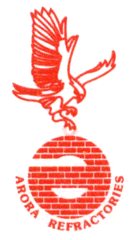Material
There are two main types of electric resistancealloys. Nickel-chromium (e.g. 80 Ni, 20 Cr) wasdeveloped around the turn of the century andwas soon used as heating element material inindustrial furnaces as well as in electric house-hold appliances.
In the thirties Kanthal introduced a newresistance heating alloy based on iron-chro-mium-aluminium with a longer life and a highermaximum operating temperature than nickel-chromium.
The two main types of alloys have their ownspecific properties, with advantages and dis-advantages, and are supplied in many differentgrades and forms. Kanthal manufactures bothtypes of alloys under the names NIKROTHAL(nickel-chromium) and KANTHAL (iron-chro-mium-aluminium).
In general KANTHAL is superior to NIKROTHAL in respect of performance andlife and is therefore nowadays a standardmaterial choice when it comes to metallic heating elements for industrial furnaces. Themost important advantages are:
- Higher maximum element temperature of1425°C 2600°Fcompared to 1250°C 2280°F
- Longer life (2–4 times)
- Higher surface load
- Higher resistivity
- Lower density
- No spalling oxide, which may contaminatethe goods and the furnace and also causeshort circuit or failure of elements and gasburners.
For the furnace user, using KANTHAL resultsin less material at a lower price and also – a longer life. Table 1 shows an example ofweight saving – and lower cost – obtained byusing KANTHAL instead of nickel-chromiumalloys. This lower element weight will alsoresult in considerable cost savings in the support system, because fewer suspensionhooks are necessary.
The NIKROTHAL alloy may have specialadvantages if you need a heating elementhaving very good mechanical properties in thehot state. KANTHAL APM has, however, creepstrength at elevated temperatures in the samelevel as NiCr 80/20.
Table 1. A 120 kW furnace equipped with R.O.B. elements. 3 elements of 40 kW each, 380 V.
|
|||||||||||||||||||||||||||
|
Weight saving:
44.4—29.6 44.4 = 33%
98—65 98 = 33%

